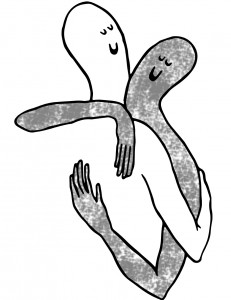Ah, summer. For those living in Vancouver, this means (moderately) nicer weather, and the annual proliferation of local shows and events throughout the city. In (In)Accessible Vancouver Part 1 published in the May issue of Discorder Magazine, I ask the question, who is responsible for ensuring event accessibility? Is it the City of Vancouver? Venue managers? Organizers? The feature looks to the accessibility of a few local arts organizations outside of Discorder’s typical scene — Kickstart and Realwheels — who are addressing accessibility in the arts in different ways. Keeping these conversations in mind, I want to consider how organizers, venue managers, and show attendees might follow the lead of these organizations, and not just talk about goals for the future, but take tangible actions right now.
For venues and organizers, one place to start is with the information and strategies put forward by RAMP, or the Radical Access Mapping Project. RAMP is a solo project, founded and run out of Vancouver by an individual known as romham. One of the major focuses of RAMP is to perform accessibility audits of local venues, bars and businesses, and make this information publicly accessible. RAMP also provides blank templates for people to conduct their own venue audits.
However, as romham points out on the RAMP website, an audit is only one part of the picture. It must be used “as a whole process whereby individuals and groups begin (or continue) to look at the many ways their space / event / organizing group etc. can shift its priorities, its philosophies, its understandings, and yes its walls, sometimes razing the entirety to the ground, to create and recreate not only a more welcoming space for multiply disabled folks, but to change, shift, demolish notions of worth, of solidarity, of resistance, of community altogether.”

With respect to groups enacting this in Vancouver, romham has particularly positive experience working with the Reverb Queer Reading Series:
“The [series] was a great example of taking the audit process seriously and moving it forward by making incremental changes a standard part of the organizing of an event,” says romham. “Organizers intentionally started with a reasonably accessible space, and every installment they increased and improved access in one area or another, from childcare, chemical and EMF sensitivity, wheelchair user access, fat-friendly seating, ASL interpretation, and so on.”
There are other local organizers who are making use of the tools put forward by RAMP and working to expand our collective understanding of accessibility. For Melanie Matining, one of the organizers of local queer dance parties Denim Vest and Open Relationship, accessibility is a big part of event planning and discussion. Using information from RAMP, organizers focus on physical accessibility, and ways to make their events more inclusive, including emotional accessibility and financial accessibility. In a city as expensive as Vancouver, financial accessibility is a really interesting thing to think about.
“With [financial accessibility] we think about sliding scale, but take it a step further,” says Melanie. “It’s one thing to say, ‘no one is turned away at the door,’ but also that there’s a point of discomfort when someone has to come up to the door staff to say they don’t have enough. So we’ve had conversations with community, and one of the small things we did that created a really awesome positive impact to the party was to use a jar for the entry fee so people have the ability to pay what they’re able to, without judgement.”

Among the important things Melanie points to is the power of having community conversations, and asking folks who attend their events what they need or what they’d like to see.
“I think people attending events have a lot of power too […] I think it would help if the people who come out to events could connect with organizers and have real conversations and think about capacity,” she says. This way, there are opportunities for folks to work together on what they think is important, while also recognizing the capacity and resources that organizers are working with.
“Given all the things that [organizers] want, sometimes we have to [work on things] one by one,” explains Melanie. “Having a culture of compassion, and being like, ‘Okay we want to make it accessible, but it’s going to take some time,’ is important! We’re living in a racist, ableist, transphobic world, so there’s a lot of systems we have to debunk in ourselves, as well, if we want to get to somewhere that is genuine.”
I think the idea of having compassion is important, because implementing accessibility policies and practices is tough work. It requires time, energy, emotional investment, and other resources that are not always available. This being said, bringing compassion into these conversations will likely look different for different people. For organizers, it could look like starting small, and being okay with things going slow — as long they keep improving. And for show attendees concerned about accessibility, it means communicating needs and desires with organizers, venue owners, and staff to communicate needs and desires. Finally, for anyone thinking about accessibility within their own circles, to consider how actions, discussion, knowledge and other resources are strengthened when used collectively.
X
You can find out more about RAMP at their website radicalaccessiblecommunities.wordpress.com.


